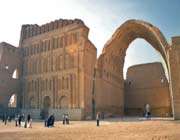A short history of high buildings in Iran
Introduction
The idea of high buildings can be traced to many centuries ago when monarchs built, fortresses on elevated hill-tops, from where they could keep the surrounding areas under surveillance. Such a building was also useful for the deference of the city.
Ancient fortresses overlooking a vast expanse of land are historical examples that are found in abundance in most countries.
High Buildings in Pre-Islamic Period
One of the most glamorous citadels still extant in the south-west of present-day Iran (Province of Khuzestan) is Ziggurat ‘Chogha Zanbil’ which was built by the Elamite Empire in 1250 BCE. This temple was built in the shape of a stepped pyramid, originally having five stories. The remains of the building in its present shape have a high of 25 meters though it is believed that the building was initially 50 meters high.
During the Median Empire which followed the rule of Elamites residential houses were often built in the low lands whereas the uplands were designated for the royal palaces.

The most notable among high buildings remaining from that period are the ones situated on hill-tops in an ancient town called Noushijan. Other specimens belonging to that era are the tombs of the famous persons built on top of ‘Davood Akhtar’ mountains. During the rule of the Achaemenids Empire, despite a strong central government and the division of the country into a number of authoritative governorships, roads and road-side resting houses gained increasing importance necessitating greater protection against hazardous incidents. This era gave rise to newer forms of high buildings such as Pasargad and Persepolis (which served as the seat of the government), Zoroasstrian temples and some kinds of minarets that were erected for the purpose of making public announcements. In the Parthian Empire (or Arsacides), which followed the Achaemenids attempts were made to revive the architectural glamour of the latter dynasty. Roadside minarets, firealtars, Zahak citadel, Anahita temple are among the major buildings remaining from the Parthian period.
Parthians were succeeded by the Sassanid Empire.
During the Sassanid era Iran was actively involved in regional trade and the famous Silk Road which extended eastward as far as the China Wall Linked Persia to Central Asia and eastern regions of the continent.
Among the Sassanid high buildings Taq-Kasra stands out as most notable. In addition, a large number of fire-temples built during the Sassanid rule are still extant in the provinces of Khorasan, Esfahan, and Azarbaijan.
Fortresses constructed on hill-tops are among other examples of the Sassanid era buildings.
Other links:
Population and Ethnic Groups of Iran
Ancient Cities and Archaeological Hills, Bushehr
Persian History
History